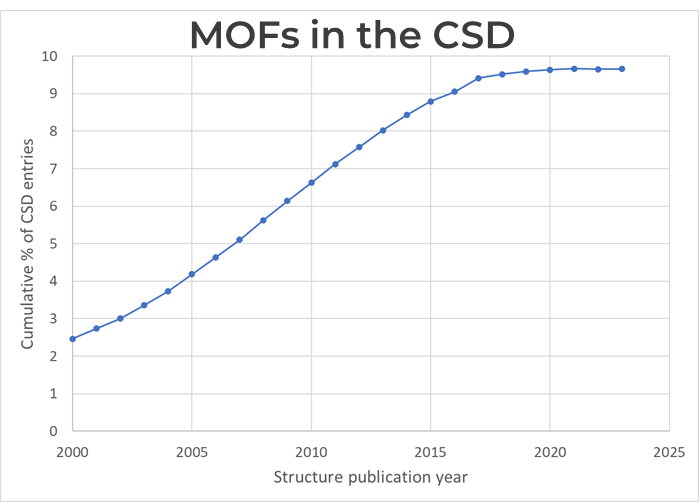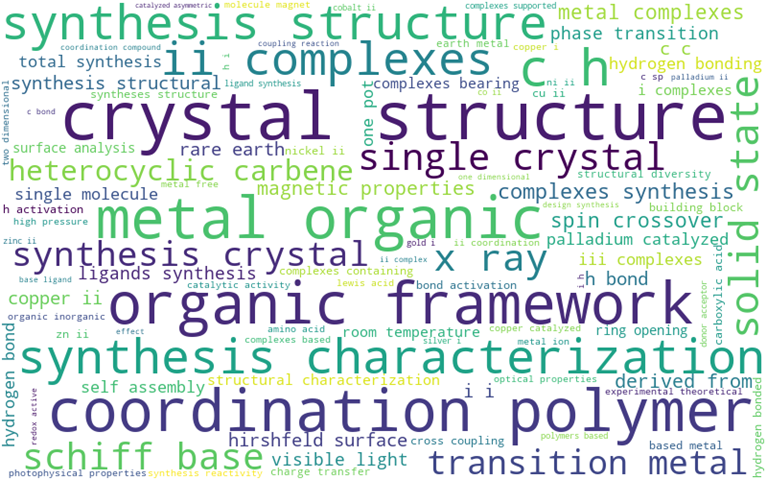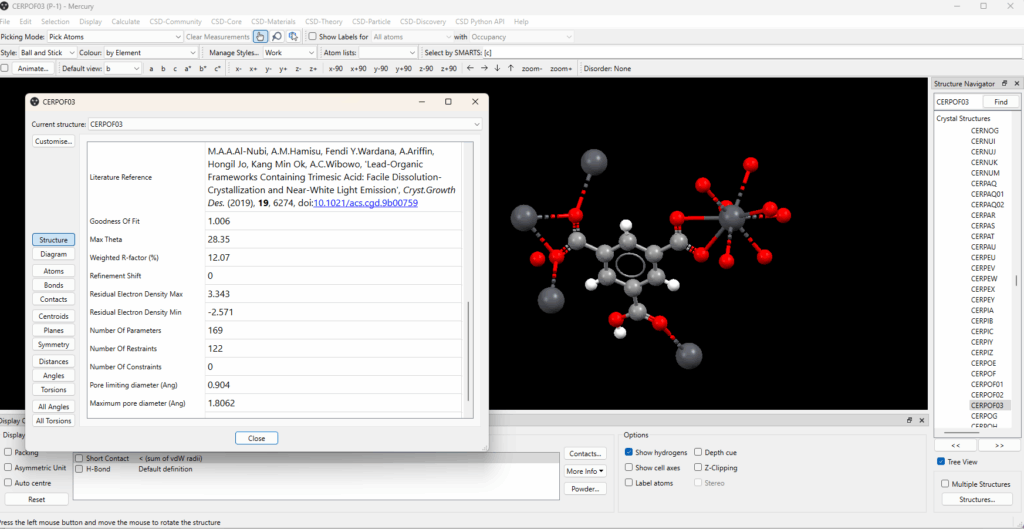Enriching the CSD: New Data Fields for Deeper Structural Insights
With the release of the Cambridge Structural Database (CSD) 6.00 new, searchable fields have been added to existing entries that bring you added scientific value and analytical potential.
This enrichment allows researchers to interact with structures in entirely new ways, whether browsing in Mercury or running targeted queries via the CSD Python API.
New Data Integrity Fields for Over One Million Structures
You can now identify structures most relevant to your work even more easily. Additional data integrity fields for over one million entries have been added, directly from the deposited CIFs. These include:
- Weighted R factor.
- Goodness of fit.
- Shift.
- Residual density (max and min).
- Number of parameters, restraints and constraints.
- Theta max.
These fields can help you to:
- Prioritise higher-quality entries for downstream analysis.
- Filter out problematic or incomplete structures in automated workflows.
- Gain clearer context when interpreting visual or computational results.
New Calculated Properties for Metal–Organic Frameworks (MOFs)
Metal-organic frameworks entries are also improved, a key aera of research interest and growth in the CSD.

For over 135,000 MOF CSD entries, calculated properties are now included, such as:
- The total surface area and geometric volume of the pores.
- The number of percolated dimensions (from isolated pores to 3D-connected networks).
- The diameter of the largest sphere that can percolate through the pore system.
- The diameter of the largest sphere that fits in the structure’s void space.
These properties are calculated using established computational methods and give researchers a new lens through which to explore and compare the complete collection of porous materials in the CSD.
Improved Literature Information
Scientific context is vital, so literature reference data has been improved by adding article titles to over 270,000 CSD entries. This makes it easier to understand the purpose and findings of the associated publication without needing to leave the CSD-Portfolio.
You can now:
- Search by keywords in article titles.
- Gain quicker insight into the research focus behind a structure.
- More easily trace trends in the literature around certain structure types.

View and Search the New Fields
All of these new fields are now:
- Viewable in Mercury. To see the additional data fields in Structure Information, use the Customize… button and choose the fields you want to see in the dialog.
- Searchable in the CSD Python API, opening up new filtering and classification workflows.
Below, you can see how this information appears in Mercury. What new patterns or insights will you discover?

Looking to the Future
This is just the beginning. We plan to expand these enhancements to more structures and introduce additional derived properties in future releases. If there are specific data fields or calculated properties you’d like to see in the CSD, we’d love to hear from you.
Try it out today and see what new insights you can uncover with this enriched view of the CSD.
Next Steps
To discuss further and/or request a demo with one of our scientists please contact us via this form or .
Check out the Cambridge Structural Database (CSD) for yourself and see how your research can benefit from the combined knowledge of over 1.3M small-molecule organic and metal-organic crystal structure data.
Proprietary data? Our team can curate your proprietary data into a Cambridge Structural Database (CSD)-like database, accessible through a simple browser-based interface. This is all done within your firewall to comply with your data security requirements.
More information on CSD software trusted by academic and industrial institutions around the world.
See case studies of the CSD in action, driving forward the boundaries of scientific research.
Register for the upcoming webinar: Structural Insights with CSD 6.00: New Data Fields, Disorder Modelling, and Future Improvements